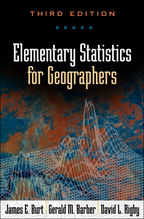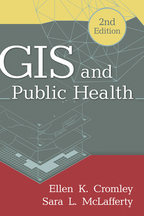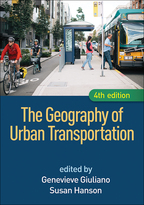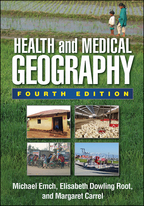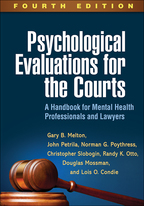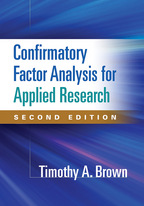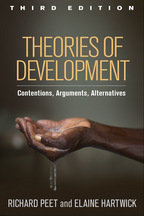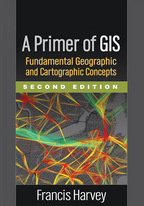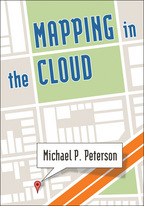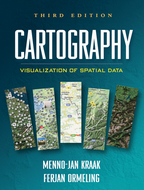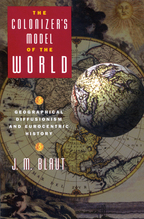Elementary Statistics for Geographers
Third Edition
James E. Burt, Gerald M. Barber, and David L. Rigby
Hardcover
Hardcover
orderMarch 19, 2009
ISBN 9781572304840
Price: $136.00 653 Pages
Size: 6⅛" x 9¼"
“For more than 15 years, I've used prior editions of this text to teach statistics, because it explains difficult but crucial concepts—such as the central limit theorem—clearly and in depth. I also like the geographical examples and the inclusion of descriptive spatial and temporal statistics, such as moving averages and location quotients. Now, with David Rigby on board and a full-fledged treatment of multiple regression, spatial autocorrelation, and spatial regression, the best book just got even better.”

—Michael Kuby, School of Geographical Sciences, Arizona State University
“A comprehensive introduction to statistical techniques and their appropriate use and application in geographic research. The book is unique in its treatment of both spatial and temporal data-analysis issues, and its methods are grounded in interesting research settings. Statistical concepts are presented in a clear and effective manner, with attention given to the theories and assumptions underpinning the techniques. Instructors will appreciate the structured exercises appearing at the end of each chapter, many of which make use of downloadable datasets. This appealing book is especially well suited as a text for senior undergraduate and beginning graduate geography courses in statistical analysis.”

—Mark W. Horner, Department of Geography, Florida State University
“It is hard to imagine a more comprehensive introductory treatment of geographic statistics. Elementary Statistics for Geographers has an excellent mix of quantitative material, problem-solving techniques, and examples. The examples, both numerical and graphical, clearly demonstrate the utility and limitations of the methods presented. Early chapters on the nature of geographic data, exploratory data analysis, and bivariate statistical relationships provide a strong foundation for the rigorous chapters that follow. The range and depth of the third edition are outstanding, with new sections on ANOVA, spatial statistics, and nonparametric statistics. This book will be equally valuable as a text for advanced undergraduates and beginning graduate students and as a general reference.”

—Scott M. Robeson, Chair, Department of Geography, Indiana University
—Michael Kuby, School of Geographical Sciences, Arizona State University
“A comprehensive introduction to statistical techniques and their appropriate use and application in geographic research. The book is unique in its treatment of both spatial and temporal data-analysis issues, and its methods are grounded in interesting research settings. Statistical concepts are presented in a clear and effective manner, with attention given to the theories and assumptions underpinning the techniques. Instructors will appreciate the structured exercises appearing at the end of each chapter, many of which make use of downloadable datasets. This appealing book is especially well suited as a text for senior undergraduate and beginning graduate geography courses in statistical analysis.”
—Mark W. Horner, Department of Geography, Florida State University
“It is hard to imagine a more comprehensive introductory treatment of geographic statistics. Elementary Statistics for Geographers has an excellent mix of quantitative material, problem-solving techniques, and examples. The examples, both numerical and graphical, clearly demonstrate the utility and limitations of the methods presented. Early chapters on the nature of geographic data, exploratory data analysis, and bivariate statistical relationships provide a strong foundation for the rigorous chapters that follow. The range and depth of the third edition are outstanding, with new sections on ANOVA, spatial statistics, and nonparametric statistics. This book will be equally valuable as a text for advanced undergraduates and beginning graduate students and as a general reference.”
—Scott M. Robeson, Chair, Department of Geography, Indiana University

